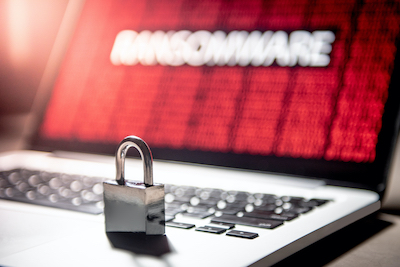
Ransomware knows no global boundaries. The same strain of ransomware that infected healthcare facilities in the U.S. and Australia recently also attacked three hospitals in Ontario.
The ransomware attack caused hospitals in Toronto and Southwestern Ontario to lose their email systems and have a difficult time accessing patient records. Their employees had to resort to pen and paper to take down patient information. While none of these victims paid a ransom, there were still many costs involved including loss of productivity, downtime, and emergency IT costs.
Unfortunately, ransomware is becoming more common globally and in the country of Canada. And it’s not just large organizations being targeted, small businesses are also often victims. The attackers are just looking for quick targets that will pay their ransom, and then move on to other victims.
82% of Canadian companies surveyed reported an increase in the overall volume of cyberattacks over the last 12 months.
Some examples of other ransomware attacks on Canadian organizations include:
From municipalities to restaurants to a local dentist office, no one is off the radar of a ransomware attacker. As ransoms get paid, the attacks continue to grow as hackers look for an easy pay day and for companies without good network security.
Let’s take a look at how ransomware works and how the attack unfolds, then we’ll get into some ways you can protect your company by using good security practices.
Ransomware is a form of malware in which an encryption code is injected into a device or entire network. The encryption causes your data to be unreadable and unusable.
Just imagine trying to pull up your customer database to make a new sale entry, and suddenly not being able to access it. Then you try opening another file, and it looks corrupted and unusable.
Once ransomware is in your system, you’re basically at a standstill without access to any of your data. That’s when the attacker sends a ransom demand offering to give you the key to undo the damage only after you pay them a certain amount in bitcoins.
The demand often comes via a popup on your computer that may say something like:
Ransom requests can vary widely, but may companies report them in the tens or hundreds of thousands of dollars. Often hackers will employ a “time clock” approach, increasing the amount of the ransom for each day or hour you don’t pay.
The main sequence of events in a ransomware attack are:
While you can’t stop the attackers from continuing to try to extort money from innocent victims using ransomware, you can put safeguards in place to ensure your devices are as protected as possible.
A Toronto dentist that had 19 out of 22 of his business computers infected with ransomware avoided having to pay a ransom because, in his words, “we had a good backup.”
If you have a good backup and recovery program, you not only ensure business continuity, you take away the only piece of leverage that a ransomware attacker has. You can simply clean your system of the infection and restore your data.
Working with a sophisticated anti-malware program can help you catch threats before they infect your system. For example, some are able to use artificial intelligence to spot ransomware patterns and stop an infection even after an employee clicks a malicious link.
Phishing continues to be the number one way that attackers spread ransomware and other malware. It’s cheap and easy for them to just put millions of spam emails out into the world and wait for them to land on unsuspecting victims.
Putting an email security program in place can both stem the tide of spam into your staffs’ inboxes and also catch and quarantine phishing threats before they have a chance to infect your system.
Your employees are on the front line when it comes to ransomware and other types of malware. These attacks use phishing emails and social phishing because they take advantage of human error. If you keep your team trained and have refreshers regularly, they’ll know what to watch out for and how to treat any suspicious emails that don’t look quite right.
Don’t become the next victim reported about in the news, take steps to protect your devices and network from costly ransomware attacks. Haxxess can help you evaluate your current network security strategy and make suggestions for strengthening any weak spots.
Contact us to discuss your security options at 705-222-8324 or through our contact form.